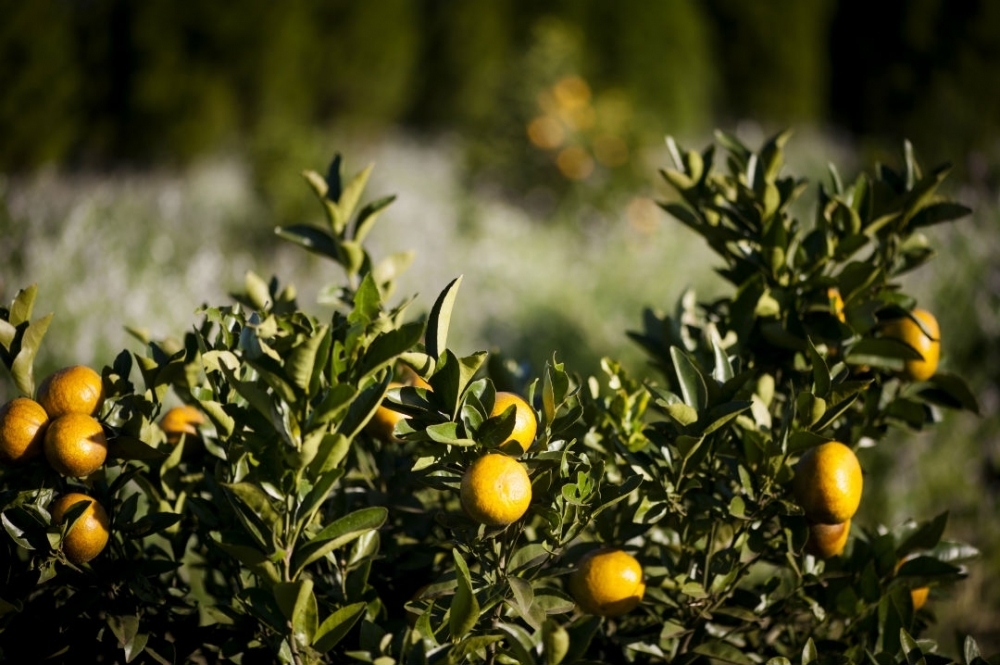

Researchers from the IAC found that N-acetylcysteine is able to control bacteria that attack citrus plants, olive trees, tomatoes and other vegetables (photo: Léo Ramos Chaves)
Researchers from the IAC found that N-acetylcysteine is able to control bacteria that attack citrus plants, olive trees, tomatoes and other vegetables.
Researchers from the IAC found that N-acetylcysteine is able to control bacteria that attack citrus plants, olive trees, tomatoes and other vegetables.

Researchers from the IAC found that N-acetylcysteine is able to control bacteria that attack citrus plants, olive trees, tomatoes and other vegetables (photo: Léo Ramos Chaves)
By Elton Alisson, in Brussels (Belgium) | Agência FAPESP – Growers of oranges in São Paulo’s northeast and olives in Italy face a common challenge. A bacterium known as Xylella fastidiosa, which causes several plant diseases, has infected their crops and caused economic losses.
The solution for fighting the disease may be in an antioxidant molecule known as N-acetylcysteine (NAC), used in humans as a mucolytic to clear the respiratory track.
Researchers at the Sylvio Moreira Citrus Research Center of the Agronomic Institute of Campinas (IAC) in Cordeirópolis, in inland São Paulo State, have found through laboratory and field studies, funded by FAPESP that the molecule is capable of controlling diseases that attack citrus. Among those diseases are citrus variegated chlorosis (CVC) – popularly known as “yellowing” – as well as citrus canker, caused by the Xanthomonas citri bacteria.
In field tests on olive trees carried through joint studies with Italian researchers, the IAC researchers also observed that the molecule was able to significantly delay disease progression in olive trees infected by Xylella fastidiosa.
“We saw that when the olive trees are manifesting initial symptoms of diseases caused by the bacteria, the NAC is able to reduce the progress of the infection,” said Alessandra Alves de Souza, IAC researcher and study coordinator, in a presentation made at FAPESP Week Belgium.
According to Souza, in humans, NAC is able to affect a structure known as biofilm, formed by infection-causing bacteria, making them more resistant to microbial compounds.
Through whole genome sequencing of the Xylella fastidiosa in 1999, with funding from the FAPESP Genome Program the IAC researchers also discovered that, after the bacteria infects the plant, it forms a biofilm so that the invading microorganisms are able to adhere to the plant’s xylem. That way, they invade the vessels that carry the plant’s water and nutrients.
Based on this observation, Souza decided to test the hypothesis that NAC can break that biofilm as it begins to form, fighting the disease and unblocking the xylem of the plant to enable the flow of water and nutrients.
The findings were quite positive and encouraged the researcher Simone Cristina Picchi to also test the use of NAC in \fighting the Xanthomonas citri bacteria that causes citrus canker, as she pursued her post-doc at the IAC in bacterial biofilm, with Souza as her advisor.
Picchi licensed the patent to use the molecule to control agricultural pests and established a start-up called CiaCamp. Through FAPESP’s PIPE Program, the team at CiaCamp is conducting field experiments in order to facilitate utilization of the molecule in products that may be used as sustainable alternatives in managing phytopathogenic diseases that affect citrus production.
The studies resulted in two products based on NAC: one to be sprayed and the other to be applied like a fertilizer, on the roots of the plants.
“We observed that the substance also has the potential to destroy some bacteria that attack tomatoes, potatoes and other vegetables,” Souza told Agência FAPESP. “Because it is a small molecule, there are many possibilities for improving it, combining it with other molecules or even enhancing its absorption in order to make it more effective and sustainable,” she said.
In field tests, plants with citrus canker that received the sprayed product presented disease regression comparable to those treated only with copper. Healthy oranges or those with CVC treated with products based on NAC presented increased productivity and yielded larger fruit than those that did not receive the same treatment, concluded the researcher.
“This means that the molecule provides an additional benefit to the plant besides just controlling pathogens,” Souza said. “Since NAC is an antioxidant molecule, it also reduces oxidative stress in the plant,” she said.
Republish
The Agency FAPESP licenses news via Creative Commons (CC-BY-NC-ND) so that they can be republished free of charge and in a simple way by other digital or printed vehicles. Agência FAPESP must be credited as the source of the content being republished and the name of the reporter (if any) must be attributed. Using the HMTL button below allows compliance with these rules, detailed in Digital Republishing Policy FAPESP.





